|
|
Post by seancass on Jan 6, 2017 19:17:57 GMT -5
M1 Garand built in 1945 at Springfield Armory, Massachusetts. Today the M1 qualifies as an antique, yet we may not have made to where we are without it. Accuracy comparable to a bolt action and better than many, reliable morning noon and night, strip it with your fingers, an offhand rifle supreme.  |
|
|
|
Post by alukban on Jan 6, 2017 20:14:56 GMT -5
OMG!!
Wooohoooo!
|
|
|
|
Post by bradshaw on Jan 6, 2017 21:37:30 GMT -5
Sean.... beaucoup thanks for getting these up.
Seancass has taken some of the heat off Lee in our collaboration to share video and photos, which, in the aerial series illustrate LEADE and FOLLOW THROUGH, as distinct from snap shooting. At 10 pounds the M1 Garand is a heavy rifle. Weight is the nature of the beast, as the M1 is a semi-automatic built for durability around the .30-06, buttstrokes and bayonets. Weight is slow to set in motion, a deficit partially overcome by the pointing qualities of the M1.
Stance on a moving target begins with balance. Flex at the knee lowers center-of-gravity, lowers rotation from the waist to the knees. The position doesn’t make sense for static offhand, just as static offhand does not make sense for a moving target. A static offhand stance may work on a high aerial target, but it does not work on the horizontal. Stance and balance vary little between rifle and handgun. The eye rivets the target, sights rise to the eye. In marksmanship, having acquired the target, the eyes pull back to the front sight. In aerial shooting the eye tracks the target, while the sights track the eye.
David Bradshaw
|
|
Otony
.327 Meteor
 
Posts: 722
|
Post by Otony on Jan 6, 2017 23:16:42 GMT -5
Is that a bottle of ketchup? Cool video, I have to say.
|
|
|
|
Post by bradshaw on Jan 7, 2017 0:12:02 GMT -5
Is that a bottle of ketchup? Cool video, I have to say. ***** Otony.... fabric dye in jugs of water. Plain water nearly impossible to see against the snow. Dye brought the ghost explosions to life. To get sprayed by freezing water is shock enough, as happened with the .357 Maximum. David Bradshaw |
|
|
|
Post by bradshaw on Jan 9, 2017 20:37:25 GMT -5
The M1 is a TECHNIQUE rifle, a rifleman’s rifle for which specific coordinations pay big dividends. A powerful example of slow fire mastery translating into fast action. The rifle looks like it balances and it does. After watching videos of slack-jawed clowns with an M1 Garand, it may be time to restore a taste of doctrine to this great rifle.
David Bradshaw
|
|
|
|
Post by barryinin on Jan 11, 2017 22:33:06 GMT -5
Very cool. I don't have a place to attempt that, so it's really great to see.
My friends must think I'm trying to sell Garands since I'm always bringing one when I "shouldn't", like to a 3-gun match or carbine class. I haven't tried trap or skeet yet, though.
|
|
|
|
Post by seancass on Jan 13, 2017 21:25:44 GMT -5
M1 en bloc clip continued success of stripper-clips used to speed loading of late 19th century bolt action rifle. None are better than John Garand’s adaptation. Black tips on FMJ designate AP——Armor Piercing. 30-06 AP has 25-caliber steel core. 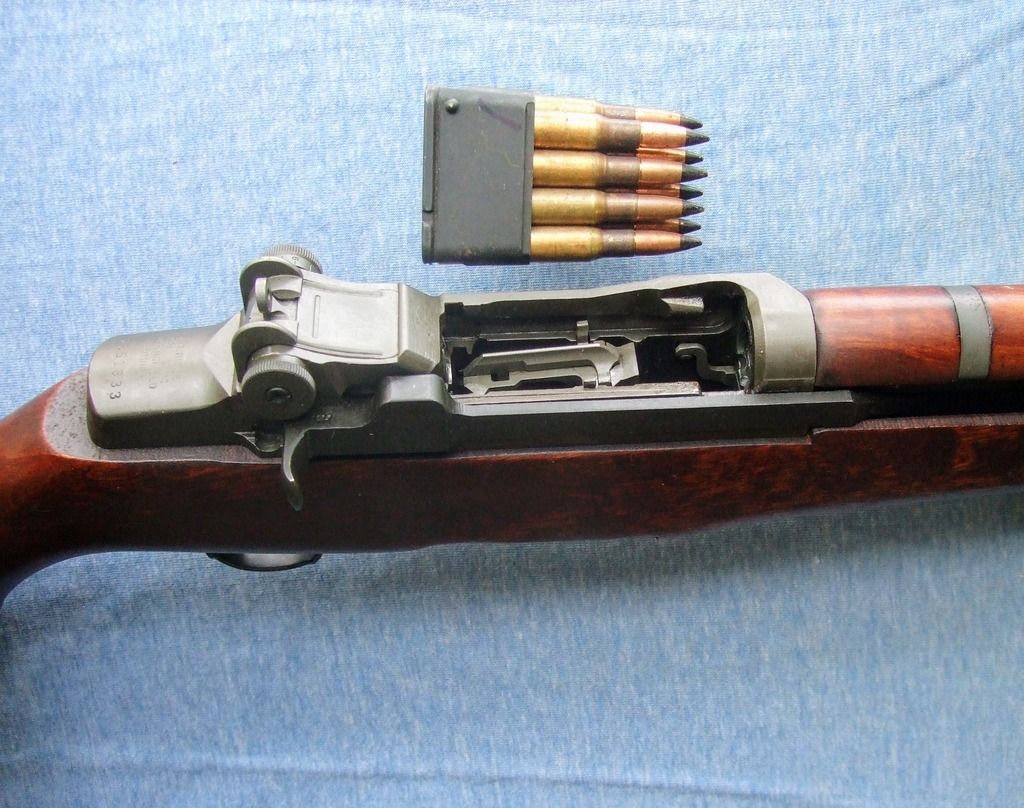 Pressed to bottom of magazine well, 8-rd EN BLOC clip releases OPERATING ROD, which slams bolt forward to chamber a round. Clip ejects after last round is fired. Unfired rounds may be ejected at any time by retracting OPERATING ROD HANDLE and pressing CLIP CATCH on left side of receiver. 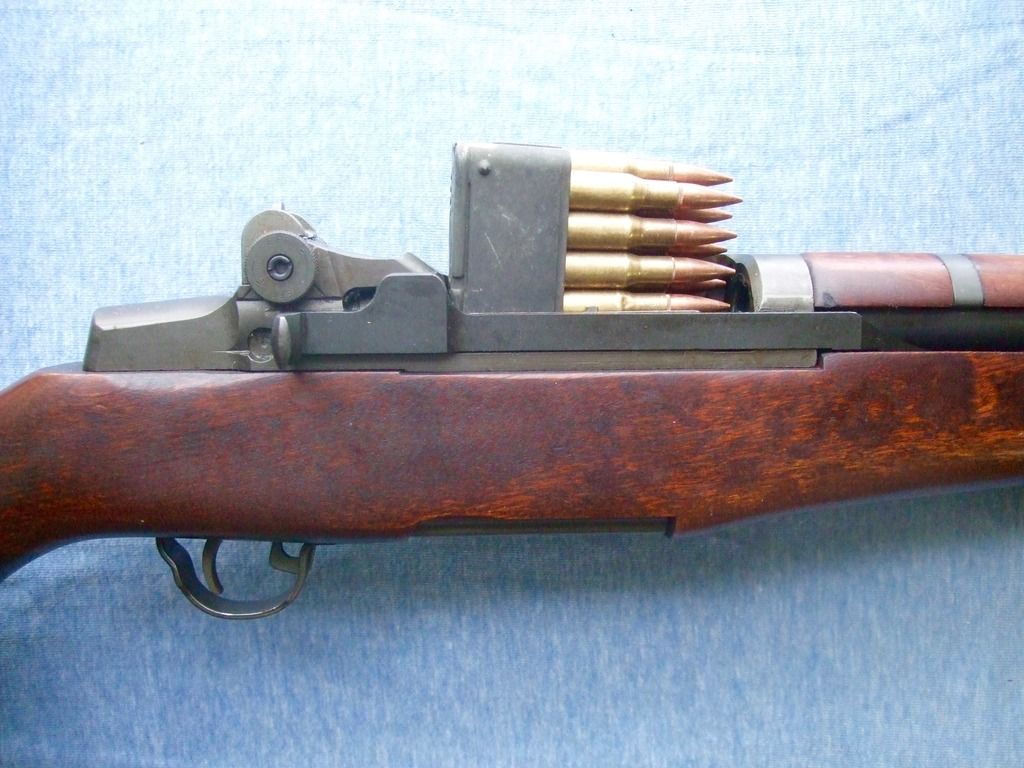 Technique matters with the M1. There is a right way and a wrong way to operate the bolt. Note OPERATING ROD forward of receiver, with OPERATION ROD HANDLE adjacent bolt head. 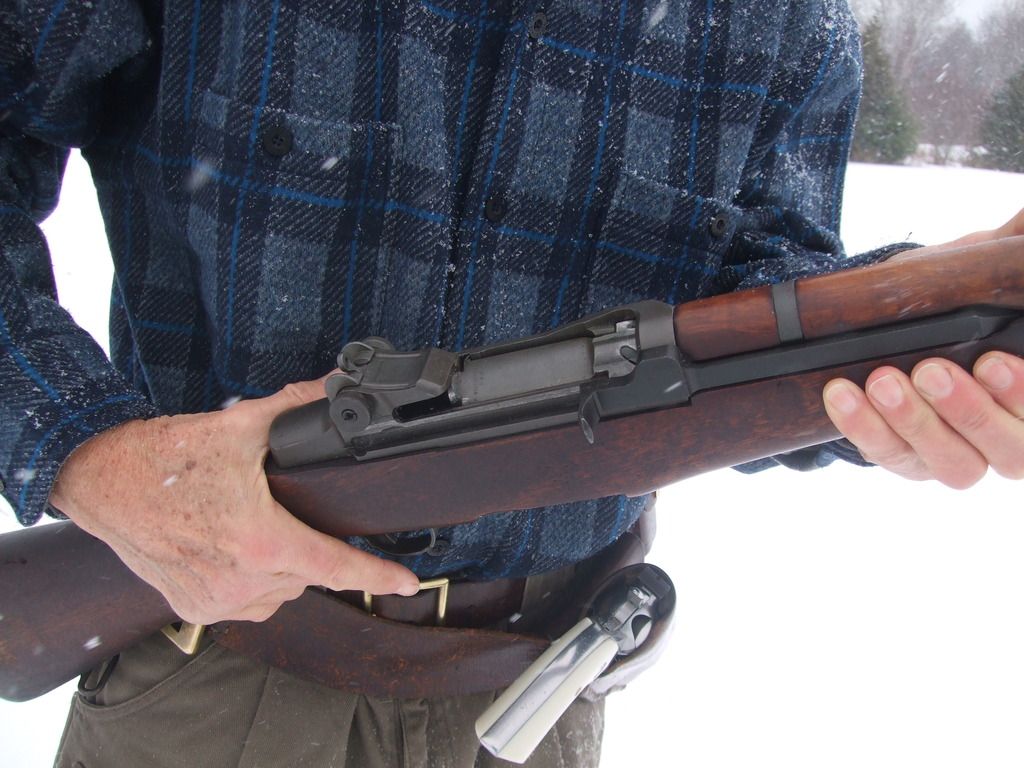 To retract OPERATING ROD, stiffen right hand as to salute. Press heal of hand against OPERATING ROD HANDLE and pull to lock back. 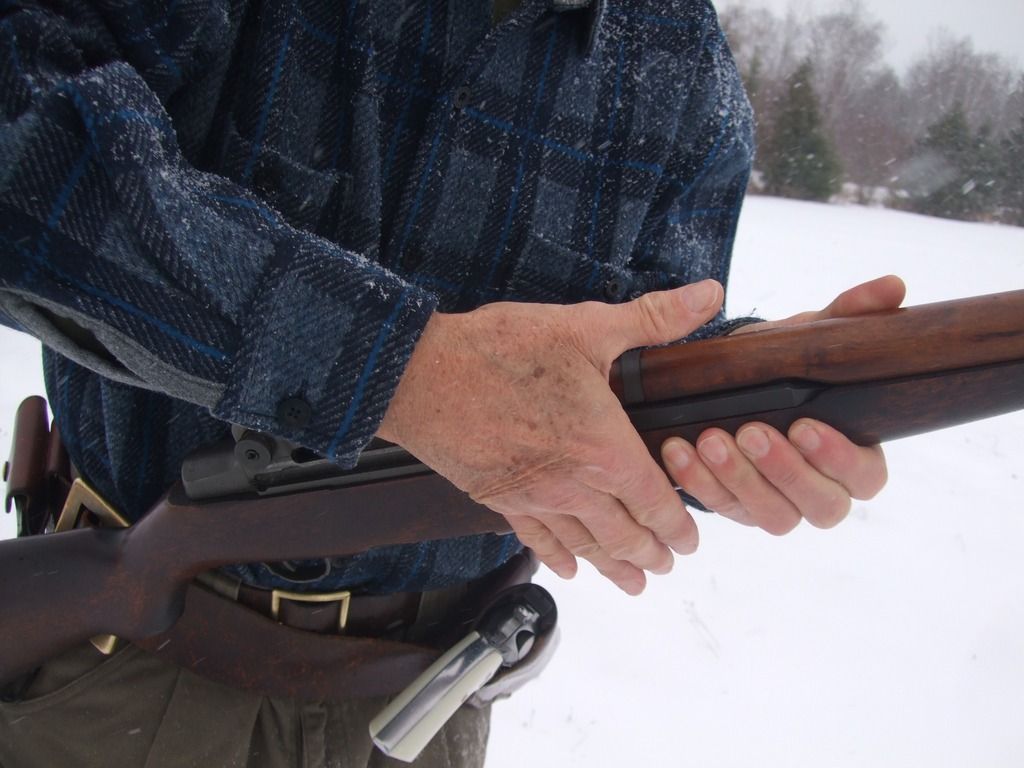 OP ROD HANDLED retracted with heel of salute hand. 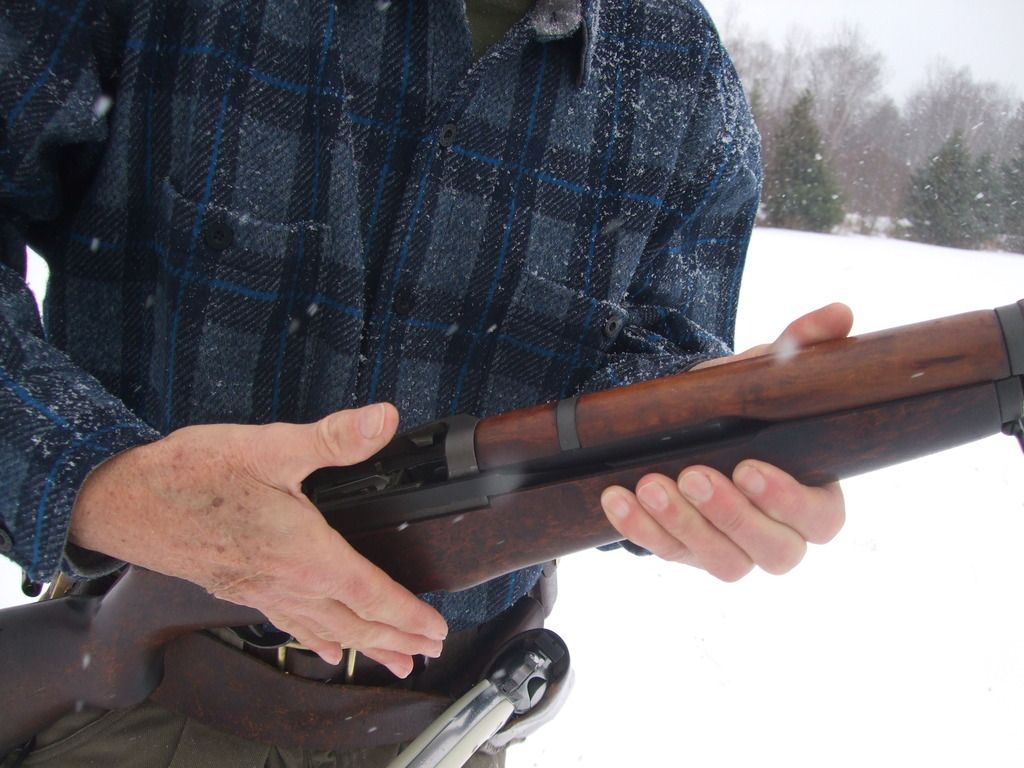 To close bolt on an empty chamber or with a round in chamber: 1) Heel of hand holds OPERATING ROD HANDLE rearward the last quarter inch. 2) Thumb depresses FOLLOWER below bolt. 3) Maintain “salute hand.” Ease op rod forward——bolt overrides follower.. 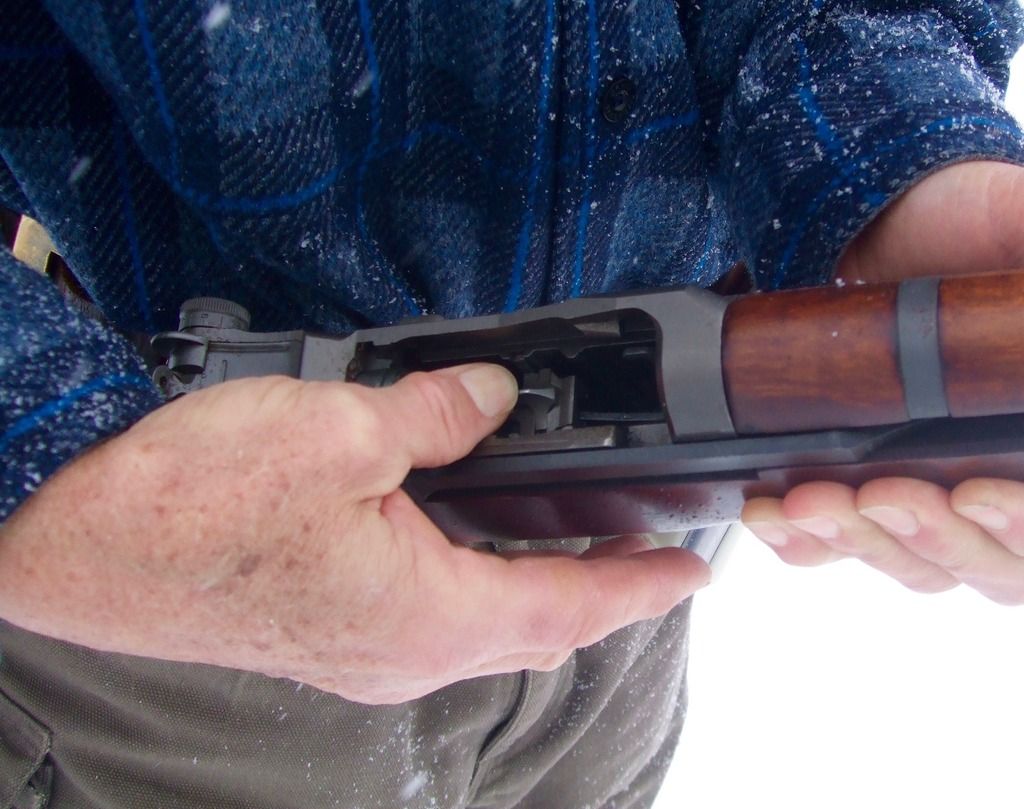 4) … Once bolt overrides follower, raise thumb, the raise “salute hand.” Bolt slams shut without crimping thumb——a nasty mistake called an “M1 thumb." 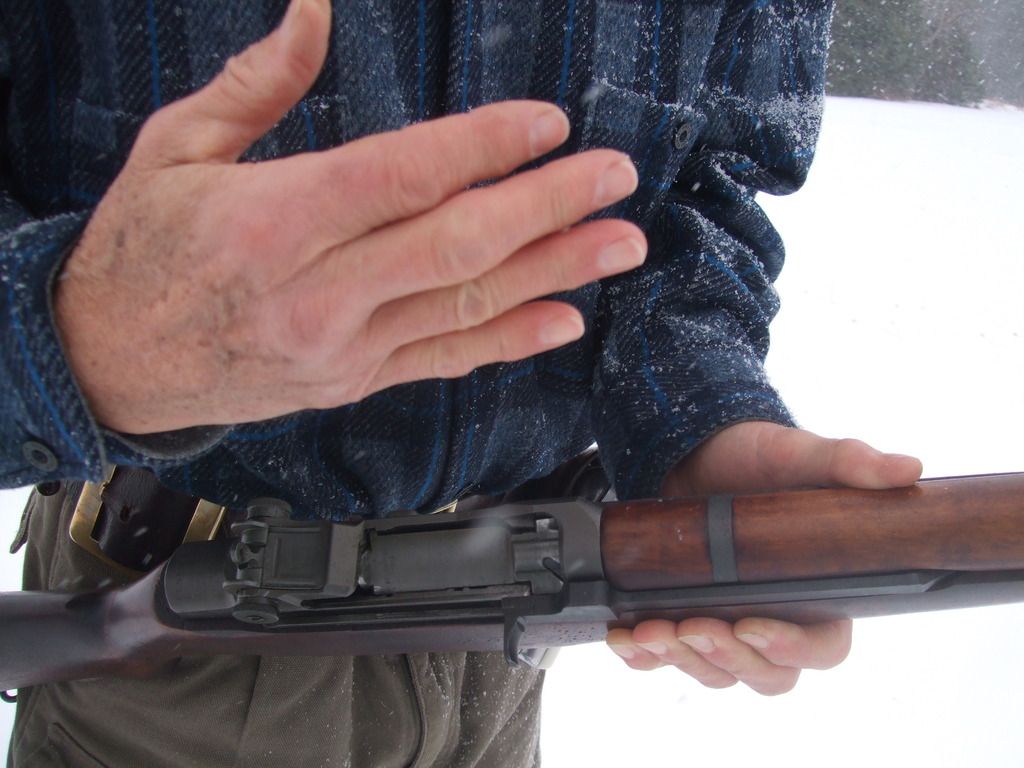 |
|
|
|
Post by seancass on Jan 13, 2017 21:29:32 GMT -5
Operating rod at lock back. To close bolt, “Salute hand” retracts OP ROD HANDLE——and holds it back!... Thumb depresses follower… Salute hand eases op rod forward for bolt to override follower… Lift thumb… Lift salute hand… 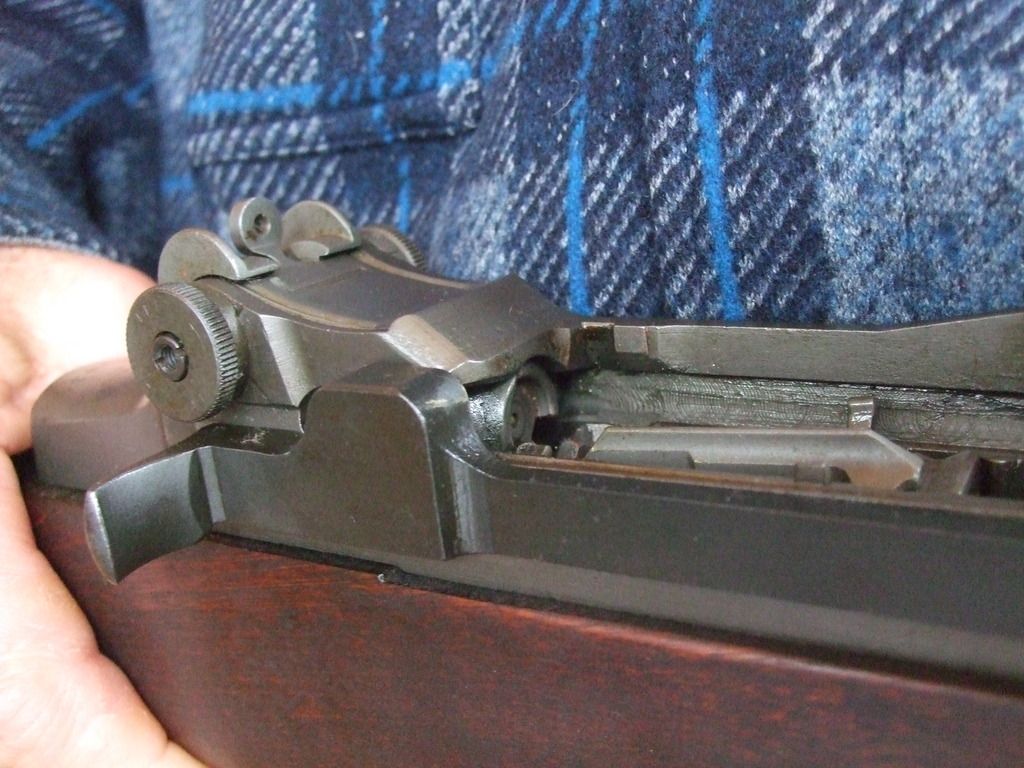 Once bolt overrides magazine follower----seen here----there is nothing to hold it open. The spring-loaded OPERATING ROD controls the BOLT. The dreaded “M1 thumb” happens when hand releases the OP ROD with thumb in magazine well. Correct sequence to release bolt becomes second nature with practice  |
|
|
|
Post by bradshaw on Jan 14, 2017 9:02:04 GMT -5
My appreciation for Sean’s posting the videos and getting these photos up. It is difficult to show correct operation of the M1, as the “salute hand” covers the action. We’ll keep at it until we reach a visual explanation of the required coordination. Persons get hurt when they let go of the operating rod handle before their thumb is out of the action. Macho stupidity----ignorance, not paying attention----gets the operator in trouble.
David Bradshaw
|
|
|
|
Post by alukban on Jan 14, 2017 10:23:06 GMT -5
...aaaaand now I NEED an M1 Garand!  |
|
|
|
Post by bradshaw on Jan 14, 2017 11:33:35 GMT -5
...aaaaand now I NEED an M1 Garand!  ***** This is an old DCM (Director of Civilian Marksmanship) rifle. Following WW II, M1’s were rebuilt and Parkerized at government arsenals. Believe same treatment was accorded M1 after the Korean war. Arsenal overhauled rifles were sold through the DCM via the NRA. Of the DCM rifle I’ve handled, all were excellent. In contrast, I do not recall seeing an M1 Garand at a gun show that wasn’t cobbled together junk. If you are serious about an M1, get the real thing, a U.S. arsenal rebuild. Or, check out the faux “Springfield Armory” product out of Genesco, Illinois. After Springfield Armory ceased production of the M14 at the order of Secretary of Defense Robert McNamara, the name was applied to a commercial enterprise. Last time I looked, receivers forM1’s manufactured by Springfield Armory, Inc., where made by Ruger in the Pine Tree foundry in Newport, NH. The investment cast receiver is sent to Australia where it is machined, then on to Springfield Armory, Inc., for assembly as a brand new M1 Garand. If I could not find a DCM, or good CMP (Civilian Marksmanship Program) M1, I would buy an M1 from Springfield Armory, Inc. As well as the original .30-06, the SA Inc., M1 is offered in .308 Winchester. i would opt for .308 for two reasons. First, the days of plentiful American surplus M2 Ball (150 FMJ) are over. Second, the .308 is a great cartridge, and in the M1 operating rods last longer in .308 than in .30-06. (Having said that, know and believe you, your children, and your grandkids may never need to tune-up or replace the Garand operating rod.) Which brings us to the Springfield Armory, Inc.’s semi-auto version of the M14, the M1A. My idea of an M14 or M1A has the early (I think Brown Precision) slim fiberglass stock. Today I would take either the original fiberglass or a plain walnut stock. I would avoid Rube Goldberg contraptions junked up with rails and goobers. Select a standard weight barrel to not destroy the fast handling and offhand qualities of the M1 & M14. David Bradshaw |
|